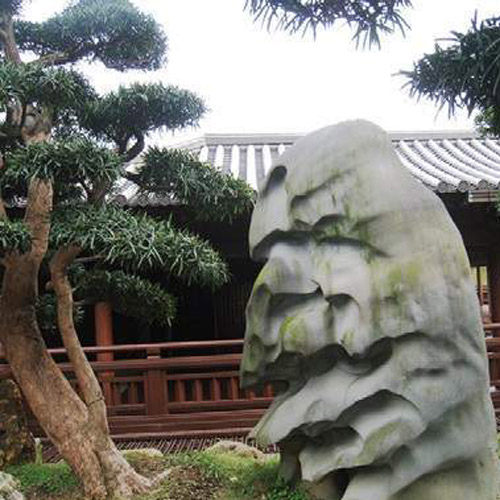Drops of Heaven in a Garden- The New Indian Express
by David Llanes | Dec 14, 2016 | Blog - Landscape
HYDERABAD: It was the last thing to expect amidst a plethora of skyscrapers and clatter in the midst of Hong Kong. My visit to Nan Lian Garden came as a saviour when I almost gave up on an overdose of the vibrancy of the world city. I have had my fill of the celeabrated skyline, fashion streets, multinational brands, shopping and the glitz. That is when my guide Fred Chang suggested that I see the other side of Hong Kong, a lovely Chinese garden, to experience its picturesque and poetic ambience soaked in elegance and serenity.
Situated at Diamond Hill, Kowloon, Nan Lian Garden is adjacent to the peaceful monastic complex of Chi Lin Nunnery. Built in the Tang Dynasty style (618 AD to 907 AD), its design is based on nature but goes beyond it, integrating the feel of poetry and painting into the garden.

The ancient landscape garden is adorned with springs, hillocks, trees, flowers, plants, pavilions, winding paths and bridges. Following the traditional landscape gardening techniques, employing the art of borrowing, concealing, penetrating, blocking, an extension of views, creating in a limited space, natural, beautiful scenes in miniature.
The garden is a manifestation of the classical style, elegant, vigorous and spectacular, displaying a strong sense of vitality and ever changing beauty. “Man in harmony with nature is an important philosophical concept in our ancient Chinese thought” started Fred.
All these ideas have deeply influenced the concepts of traditional Chinese landscape gardening. Painters and artists immersed themselves in nature and tried to recreate in their paintings the joy and wonder they experienced therein. Landscape gardeners, too, tried to recreate the fascination of nature in miniature.”
He took a breath while I deeply inhaled the fresh air. The chanting from the monastery nearby was simply enchanting – the distant hills made a scenic backdrop of the resplendent colours of clouds at dusk, the golden sheen of light from nearby ponds, all these wove a magical spell.
Fred continued, as we walked along the ponds, “In the traditional Chinese landscaping, hills and water are closely related. Water flows along the hills and the hills come alive with water. When this half moon shaped garden was created, water features were established before the mounding of hillocks.
Water elements are of two types, the Lotus and Blue Ponds are quiet, while the Pine Brook, Silver Strand and Lotus Brook are active kinds. This water comes from the stream of the North Hill and flows across the garden.”
Lotus Pond dominated in the west and the Blue Pond in the east. I feasted my eyes on the lotuses and the frolicking colourful koi carps (fish) in the pond. The garden featured all kinds of classical timber structures, such as various types of pavilions, terraces, bridges, a study, a shadow wall and stone lamps. The octagonal “Pavillion of Absolute Perfection”, placed in the centre of the Lotus Pond, was the most attractive, surrounded by eight old pine trees and the bright red Zi and Wu bridges on either side. The hillocks have been aptly placed in different locations of the garden according to the terrain and scenery.
“We believe that rocks are linked to Zen meditation and carry us back to ancient times and water makes us far-sighted. Rocks are the skeleton while water is the flesh”, Fred went on, as we looked at some interesting pieces of petrified wood rocks from the Hongshui River.
Great importance was also attached to tree trunks and crowns to emphasise the seasonal variations as they go through the cycle of growth. Fred recalled Tao Yuanming’s story “Peach Blossom Stream” where a lost world is revealed after the protagonist has passed through a very narrow access to the mountain.
There were more than sixty different species of plants in the garden, chosen under the principle of “suitable time and suitable place”.
That lost paradise was what I was looking at then. It is said that the design of a Chinese garden is a carefully arranged tour itinerary for the soul. It purposefully presents the design concepts one after another to the visitor.
It is not just a “formal” creation; it uses the formal arrangement to communicate with the spirit. The evocation of images moves the spirit to thought and feeling, so that the images resonate in the depth of the soul and liberate the imagination.I thanked Fred profusely for that unique tour itinerary for my soul and its liberation from the mundane, materialistic world.